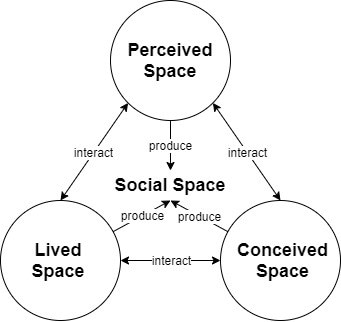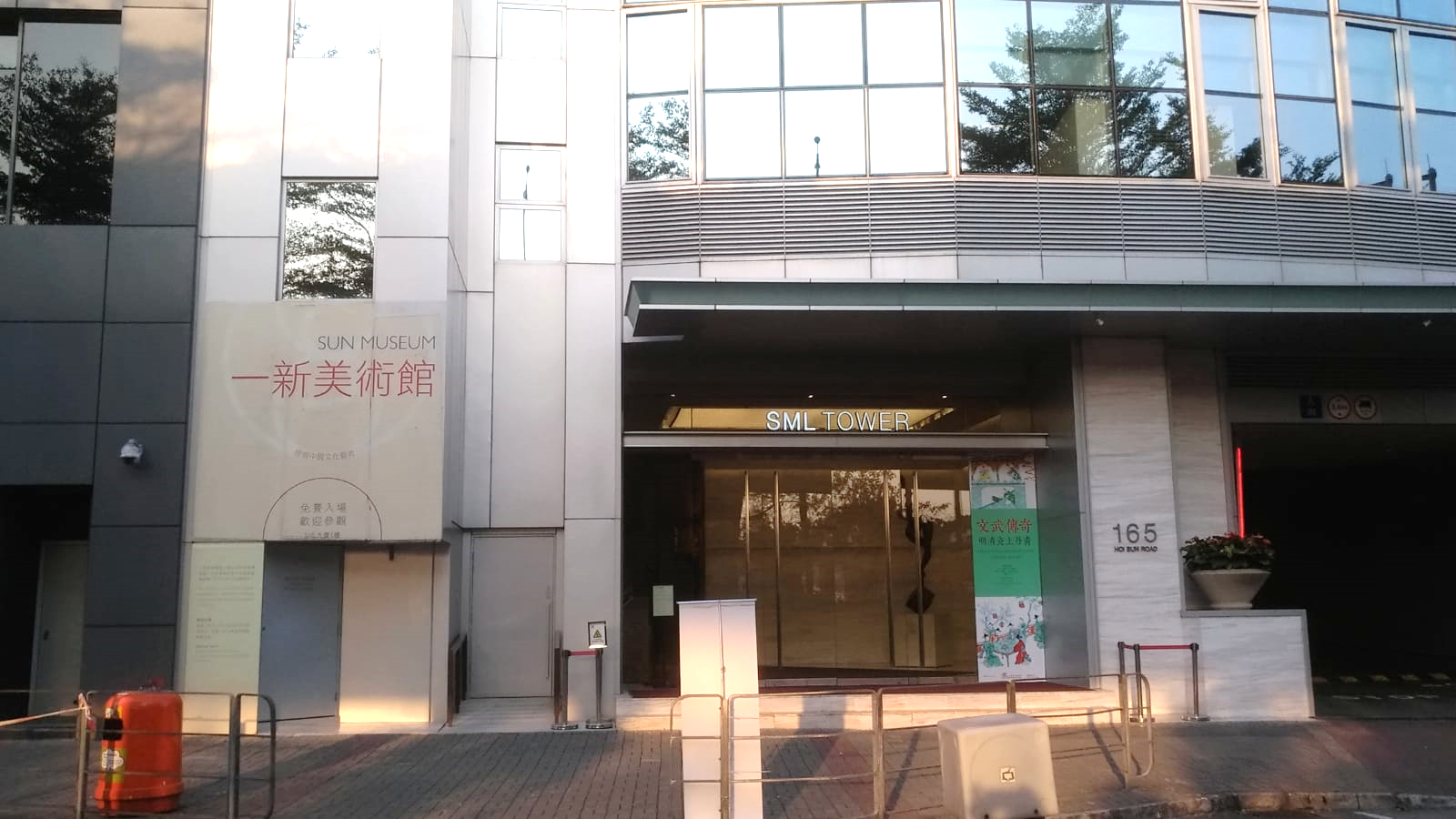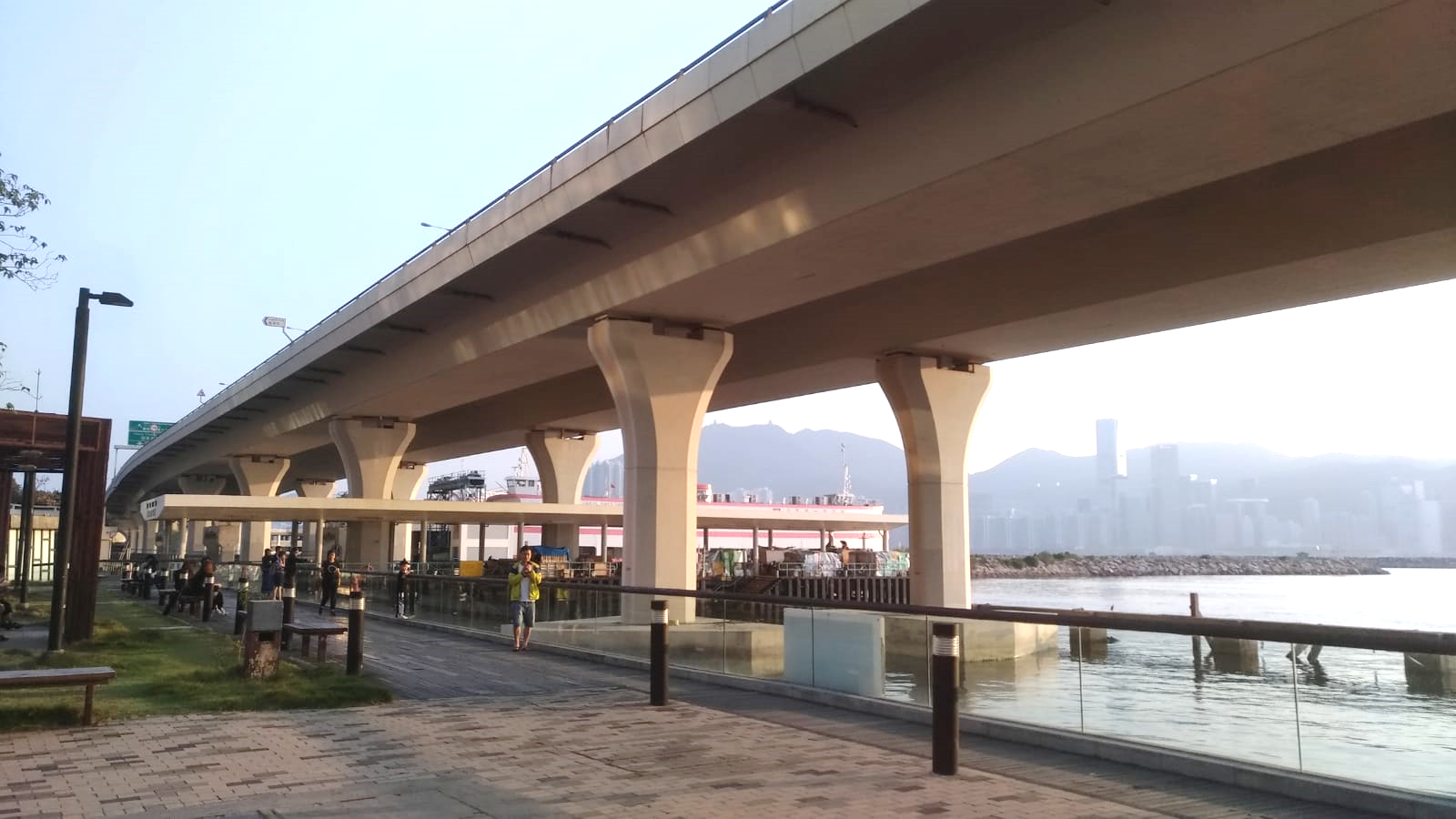The Transition from Old to New in Kwun Tong Industrial Area
1. Introduction
Kwun
Tong factory district is a unique zone with diversified land-use which
significantly differ from that in the past. These include a mixture of old
industrial buildings, new commercial offices, art and recreational sites and
restaurants. Through examining the phenomenon of old and new alternation in
Kwun Tong industrial area, this project aims to argue that these cultural
traces are strongly shaped and regulated by the changes in socio-economic
developments and community in Hong Kong. This project draws upon Lefrebvre’s
(1991) theory of “Production of Space” to deduce and analyze how these culture
traces illustrate the socio-economic transformations in Kwun Tong.
2. Cultural Geographical Perspective in Use
Cultural
geography integrates the notion of space and place into the
investigation in how cultures work in a specified location in practical
(Anderson, 2015). In other words, cultural geography explores the intersections
of culture and context and seeks out why cultural activities take place in a
specific way in a specific context (Crang, 2013).
Key
concepts included in the theory mentioned above will be defined as follows.
First, culture is comprised of a mixture of human activities, that consist of
social norms, behavioural practices and emotional reaction we take part in
obeying, resist or ignore (Crang, 2013). Therefore, it embodies a broad span of
human life and can never be seen separately from the economy, society or
politics. Second, geographical context; often related to physical landscapes,
locations and nationalities; refers to the material and non-material “things”
like historical events and values that influence what humans do (Crang, 2013).
Third, traces can be considered as tangible “objects”, like statues and
buildings, and non-tangible “things”, such as values (Crang, 2013).
Lefebvre (1991) proposed the theory of “Production of Space”, which conceptualized space, consisting perceived space, conceived space and lived space, as a social product (see Fig. 1) (Lefebvre, 1991; Wang, 2009). Perceived space is somewhere containing spatial practice involving usual activities and values that pre-exist in the space, while a conceived space consists of conceptualized rules and regulations that control the discipline of space (Lefebvre, 1991; Wang, 2009). Last, the lived space is a representation of space that appears after the prior two spaces merged. Social space is hence produced by the intersection of the three spaces (Lefebvre, 1991; Wang, 2009). Therefore, we had used this theory, which resonates with the cultural geographical perspective we seek to draw upon, as an analytical framework to explain how the concepts identified above explicate our empirical observations.

Figure 1. An illustration of the relationship among the three spaces in the "Production of Space" . (Source: Lefebvre, 1991).
3. Empirical Analysis
‘Production
of Space’ involving the intersection between culture and geographical context,
is mainly guided by human beings. There are three primary
stakeholders: government, factory buildings’ owners and users, who are
with different level of power in influencing the old and new alternation in
Kwun Tong. The corresponding three spaces and the interaction between
stakeholders will be demonstrated below.
The Perceived Space
The old Kwun Tong industrial area was produced based on historical events and human’s value. Kwun Tong, which has witnessed Hong Kong becomes a superior industrialized city in South-east Asia, is the earliest developed district in the urban area. In the early 1940s, refugees moved from mainland China to Hong Kong to seek asylum due to civil war, bringing a lot of capitals and cheap labour force to the city (Hong Kong Tourism Board [HKTB], n.d.; Kwun Tong District Council [KTDC], n.d.). Later, the embargo imposed by the United Nations in the 1950s triggered Hong Kong’s economic reform to start light industry (HKTB, n.d.; KTDC, n.d.). Numerous industries then appeared in a sudden, creating a massive demand for industrial areas. The industrial development of Kwun Tong reached golden times from 1965 to 1985 (Energizing Kowloon East Office [EKEO], 2014). Moreover, its products accounted for 18% of the total productivity of Hong Kong in the 1980s, reflecting its importance in the city’s economy (EKEO, 2014). At that time, the textile industry was the dominant business in Kwun Tong.
Besides, during that period, most people lived in Kwun Tong were refugee, immigrates and workers, who were mainly grassroots. They usually lived in low-cost houses, where they needed to share facilities such as kitchen and washroom with their neighbours. Despite the poor living conditions, they were still industrious to work, which revealed Hong Kong people’s emphasis on the economy and the Lion Rock spirit. Nevertheless, Kwun Tong industry started to decline in the 2000s after a wave of the relocation of many entrepreneurs’ production lines to Mainland China, where provided cheaper labour and production costs, due to her ‘reform and opening-up’ later (EKEO, 2014; HKTB, n.d.; KTDC, n.d.).
The Conceived Space
The government, possessed the dominate transformative
capacity, had proposed the “Energizing Kowloon East” (EKE) as the blueprint for
the redevelopment and revitalization of Kwun Tong industrial area. It aimed at
reconstructing Kwun Tong into a second Central Business District
(CBD) of Hong Kong, which was influenced by the transformation of the
economy (EKEO, n.d.). In the Conceptual Master Plan 2.0 under EKE, goals had
been set to improve the surrounding environment in the industrial area, which
illustrated the additional emphasis toward human’s standard of living (EKEO,
2014).
To
implement these, she changed the land use of regarding zone from industrial to
commercial in 2001, amended several regulations in 2010 and established
Energizing Kowloon East Office in 2012 to support the project (EKEO
n.d.) . First, in terms of Cap. 545 Land (Compulsory Sale for
Redevelopment) Ordinance, the amended ordinance lowered the application
threshold for compulsory sale orders of industrial buildings inside
non-industrial zones from 90% to 80% of ownership (GovHK,
2017; GovHK, 2019; Department of Justice [DJ], n.d.). This addressed the
problem of fragmented ownership in flatted Kwun Tong industrial
buildings. Second, the wholesale conversion of industrial buildings in
“Industrial”, “Other Specified Uses” annotated “Business”, and “Industrial” zones
is liberalized (GovHK, 2017; GovHK, 2019; DJ, n.d.). The
original waiver fees incurred to the owners in the course of the application of
usage conversion of industrial buildings are exempted. Third,
the government relaxed the waiver application policy of individual units in
existing industrial buildings to encourage the arts and cultural sectors and
creative industries to operate. Owners are no longer required to make separate
waiver applications and pay waiver fees, so long as the altered uses of industrial
units are permitted under the planning regime (GovHK, 2017; GovHK,
2019; DJ, n.d.).
The Lived Space
The transformed land use and activities nowadays, which was
found out in our field trip, are developed under the convergence of the two
above spaces. Firstly, it was found that there is a diminishment of tradition
factory belt and enlargement of the commercial zone, which consists of newly
emerged hotels, office buildings, places of entertainment and restaurants.
Secondly,
it was discovered that cultural and creative industries, including music
performance site and the art museum, has been introduced into those unused
factories’ units.

Figure 2. An Art Museum in Kwun Tong. (Source: Authors).
Thirdly, it was also
realized that several recreational facilities have constructed in the Kwun Tong
Promenade located near the sea (See Fig. 9-12). All these present as new traces
as the result of the execution of conceptual space.


Figure 3. Recreational facilities in Kwun Tong Promenade. (Source: Authors).
The interaction between
stakeholders will be further demonstrated as follows. As mentioned previously,
in conceived space, the government proposes plans and
implements policies, while the other
two stakeholders interact with each other in perceived space and
lived space and either adapt or contend against the redevelopment
plan. The three stakeholders influence and counterbalance with one another,
resulting in a representation space (lived
space).
On the one hand,
regarding the industrial land use of factory buildings. First, the factory
buildings’ owners were allowed to rent their units legally without paying
any additional fee to non-industrial land users. Some merchants operate
the business with potentially higher market value and can afford a higher rent,
due to the change of governmental policies. Therefore, the factory owners can
no longer enjoy cheap rent as before and have to either pay high rent
or to find another place to operate. Otherwise, their factories had to close
down.
On the other hand,
concerning the non-industrial land use of factory buildings, as mentioned
previously, factory buildings’ owners no longer need to reject or paid an
additional fee for tenants with other land-lease purposes. Instead, they can
rent out their units as, for example, studio, design and media production,
printing and publishing units legally. Consequently,
the non-industrial users do not need to hide
their reason for renting units from industrial buildings and
operate publicly, which facilitates promotion and flourish
of their unique culture.
4. Conclusion
In conclusion, the
phenomenon of transformation in Kwun Tong industrial area’s cityscape can be
explained by the theory of “Production of space”. The corresponding zone had
been reconstructed gradually from a manufacturing quarter or “perceived space”
to a place accommodating various land use for business, trading and
recreational purposes, also known as “lived space” containing changed traces.
The progression was made possible with “conceived space”, which is the urban
development plan and complementary building codes, under the interactions of
multiple stakeholders including the government, users and the land developers
and their altered values. Even though multiple theories can as well be used to
justify the old and new alternation in Kwun Tong factory belt, cultural
geography concludes the result of intertwining of social aspects, making the
research context more comprehensive.
Reference
Anderson, J. (2015). Understanding
cultural geography: places and traces. Routledge.
Crang, M. (2013). Cultural geography.
Routledge.
Energizing Kowloon East Office. (2014). 九龍東工業傳統及公共藝術/城市設 計潛力研究. Retrieved Nov 5 ,2019, from
https://www.ekeo.gov.hk/filemanager/ content/whatsnew/IHS_executive_summary_chi.pdf
Energizing Kowloon East Office. (n.d.).
Retrieved Nov 7, 2019, from https:// www.
ekeo.gov.hk/tc/vision /index.html.
Hong Kong Government. (2017, June 21). Press
Releases–Legislative Council: Using
Industrial Building Units for Cultural, Arts
and Sports Purposes. Retrieved Nov 9, 2019, from,
https://www.info.gov.hk/gia/general/201706/21/P201 7062100474.htm
Hong Kong Government. (2019, Feb 1). Press
Releases– Relaxation of Waiver
Application for Existing Industrial Buildings. Retrieved Nov 9, 2019, from https://www.info.gov.hk/gia/general/201902/01/P2019020100743.htm?
Hong Kong Tourism Board. (n.d.). Kwun
Tong. Retrieved Nov 5, 2019, from
http://www.discover hongkong
.com/tc/see-do/neighbourhoods/kwun-tong.jsp
Kwun Tong District Council. (n.d.). Kwun
Tong History. Retrieved Nov 5, 2019, from https://www.kwuntong.org.hk
/tc/history.html
Laws Compilation and Publication Unit. (n.d.).
E-legislation. Retrieved Nov 9, 2019, from https://www.elegislation.gov.hk/
Lefebvre, H. (1991). The Production of
Space (Vol.142). Blackwell: Oxford.
Wang Zhi-hong. (2009). 多重的辯證列斐伏爾空間生產概念三元組演繹與引申. 地理學報, (55), 1-24.
**Noted that all photos were taken by group members in Kwun Tong Industrial Zone on 9th November in 2019.**


